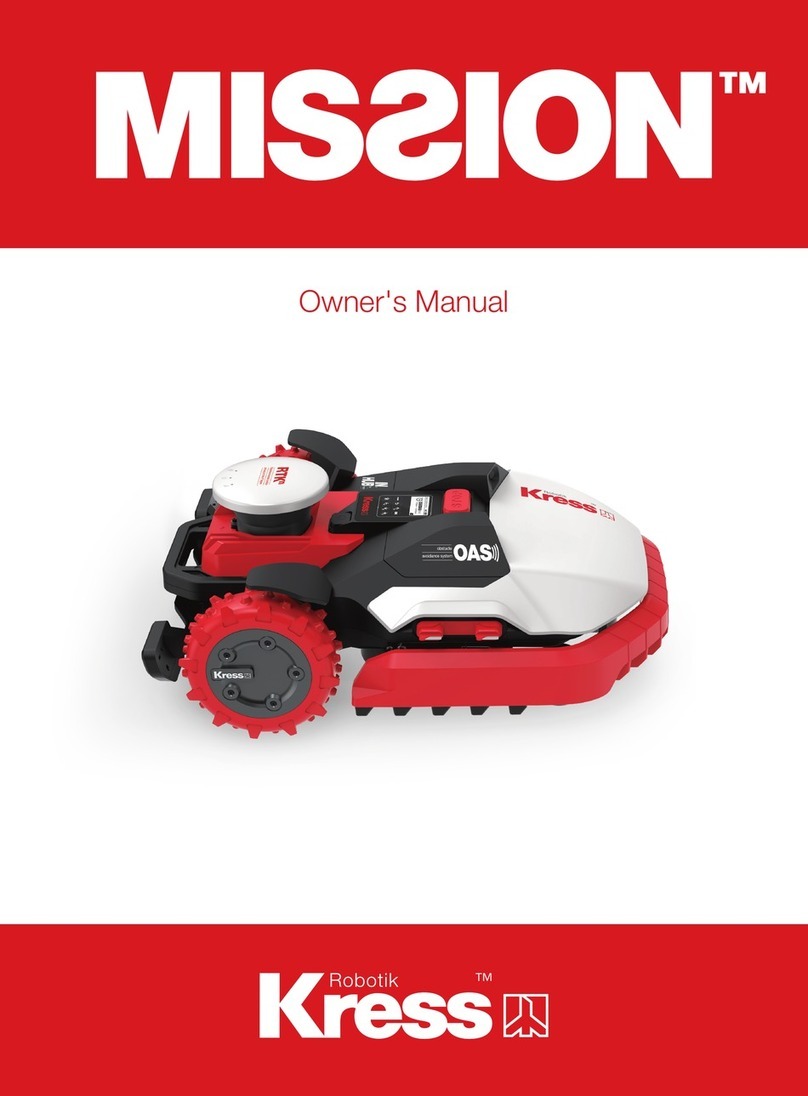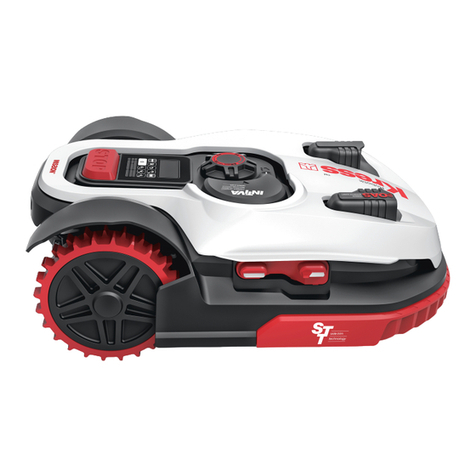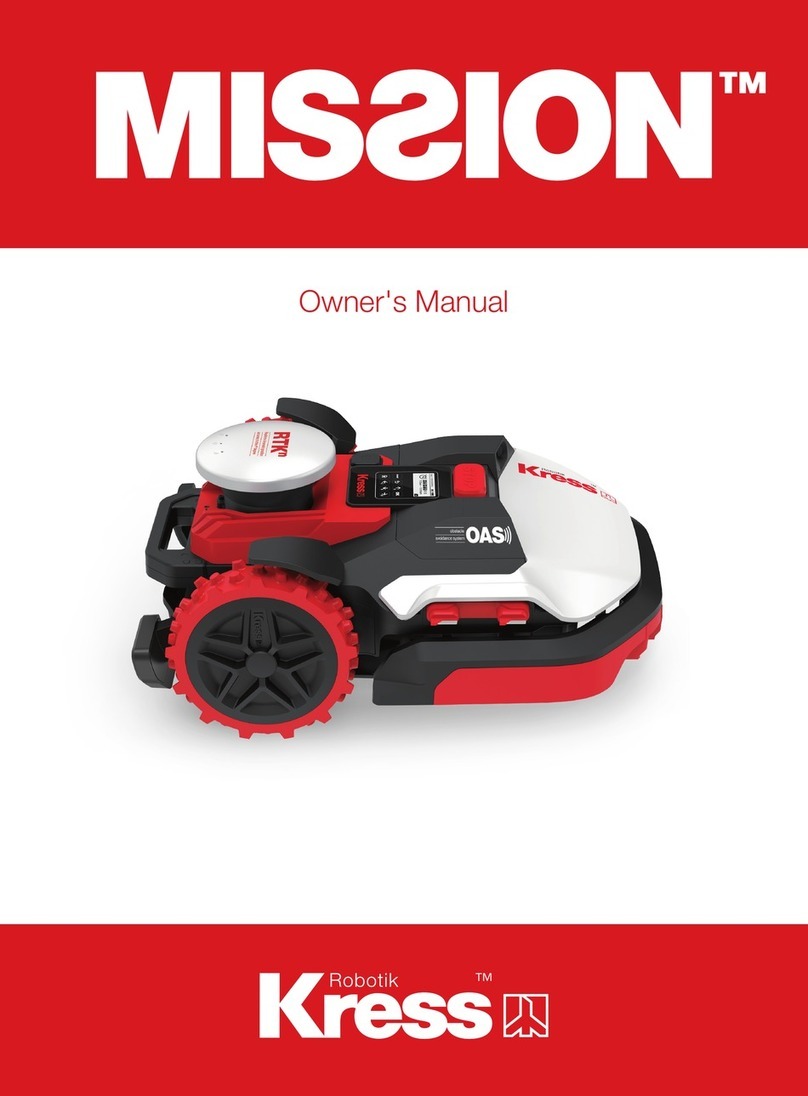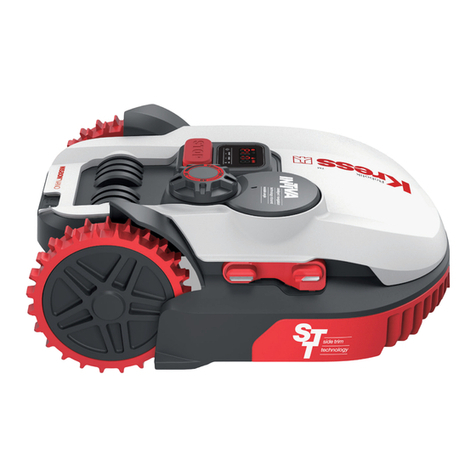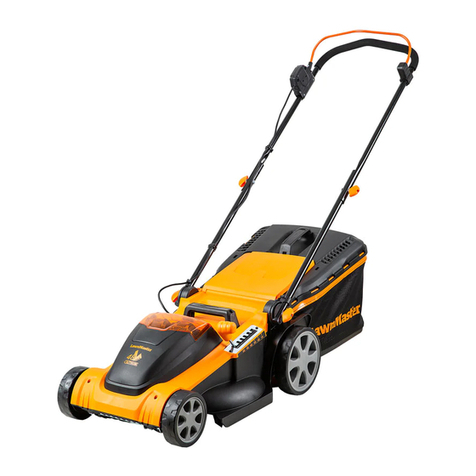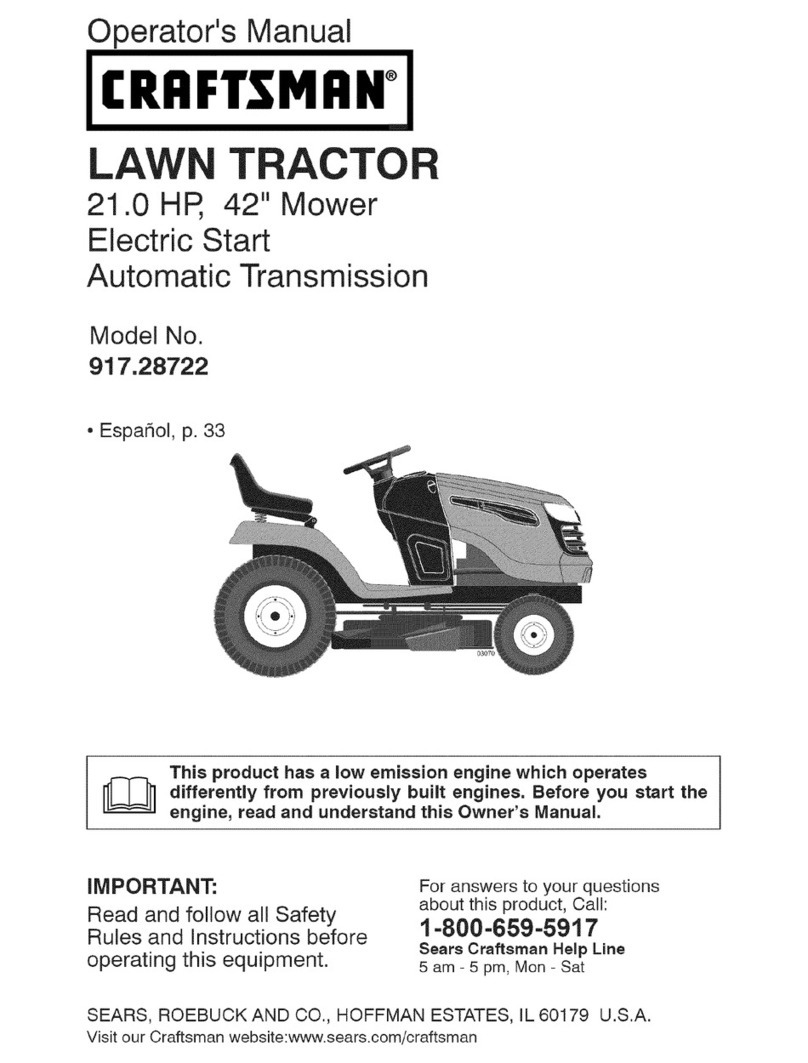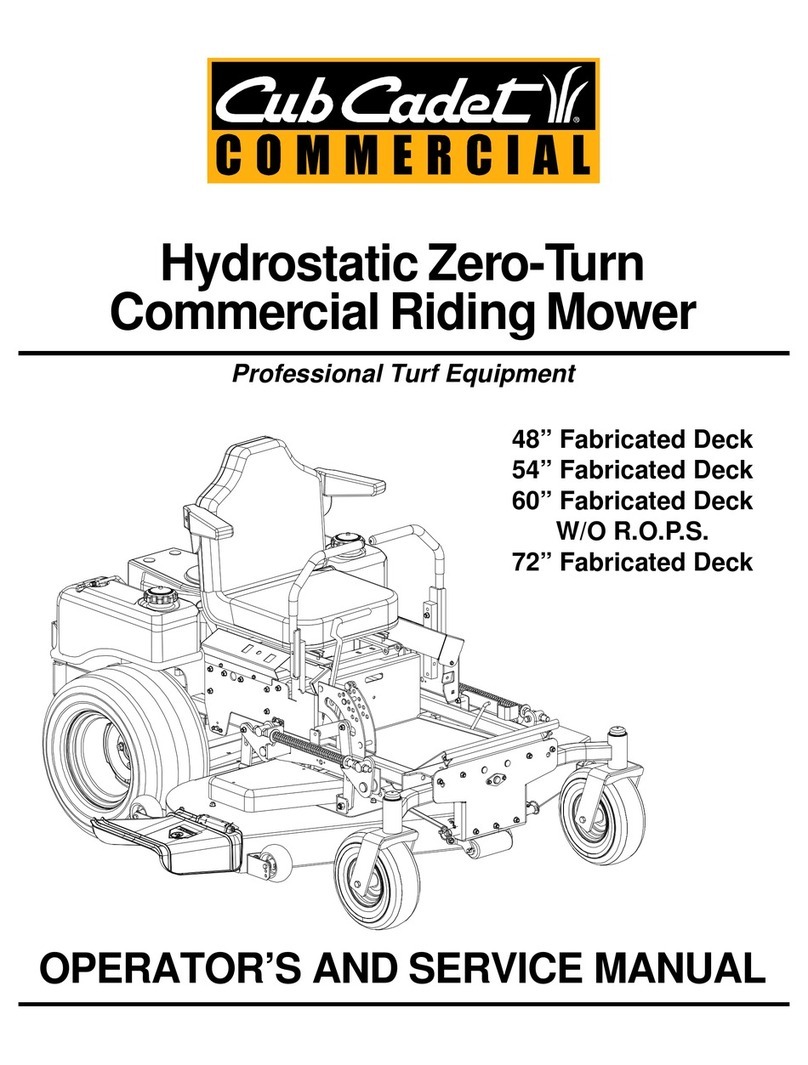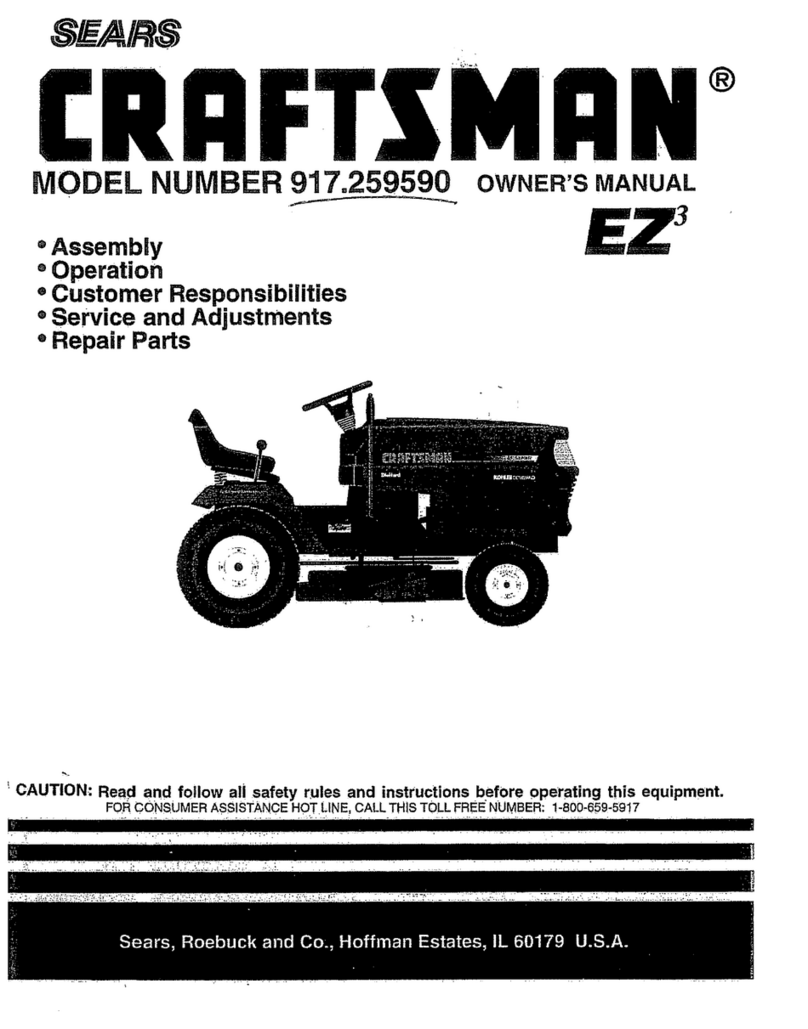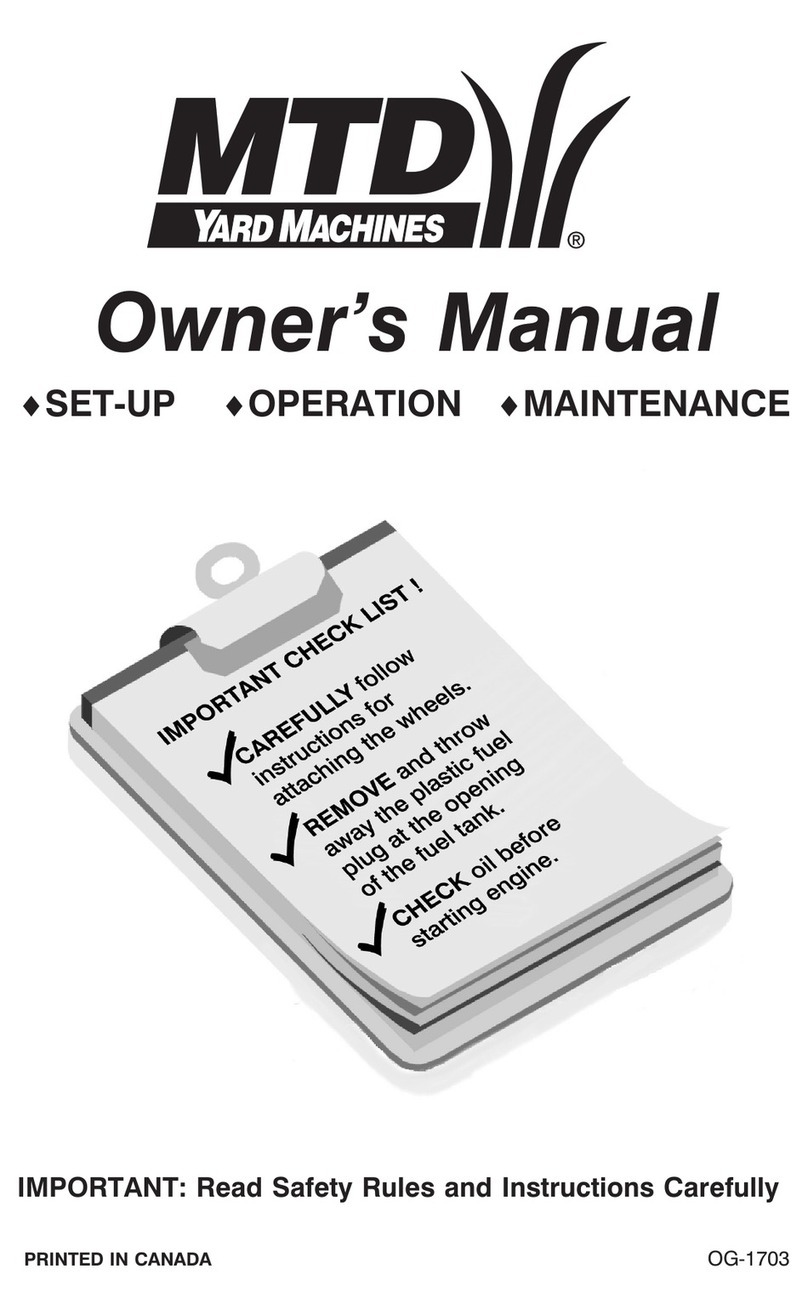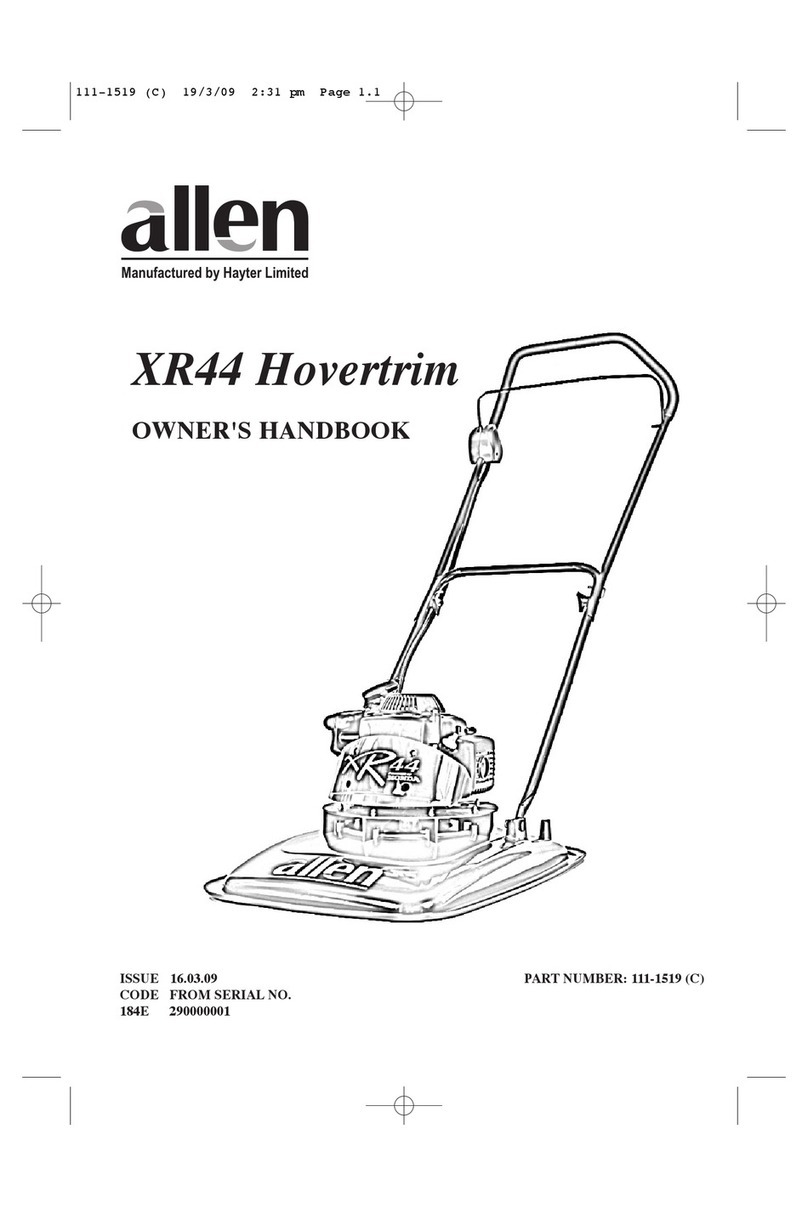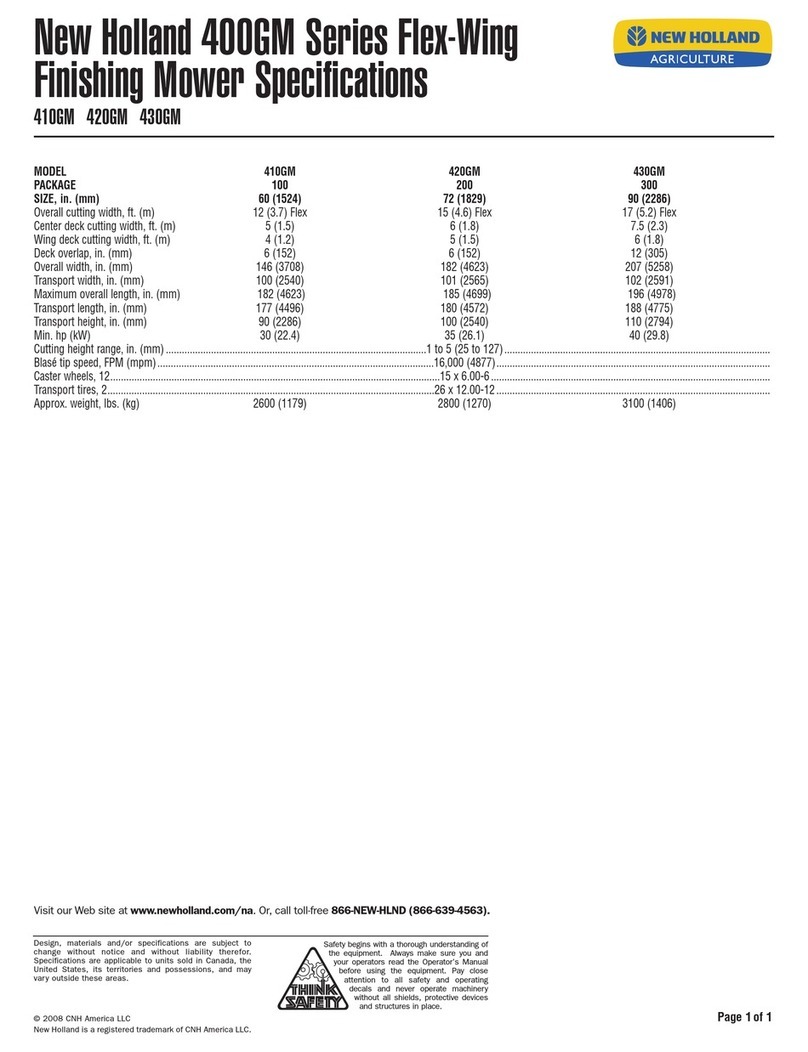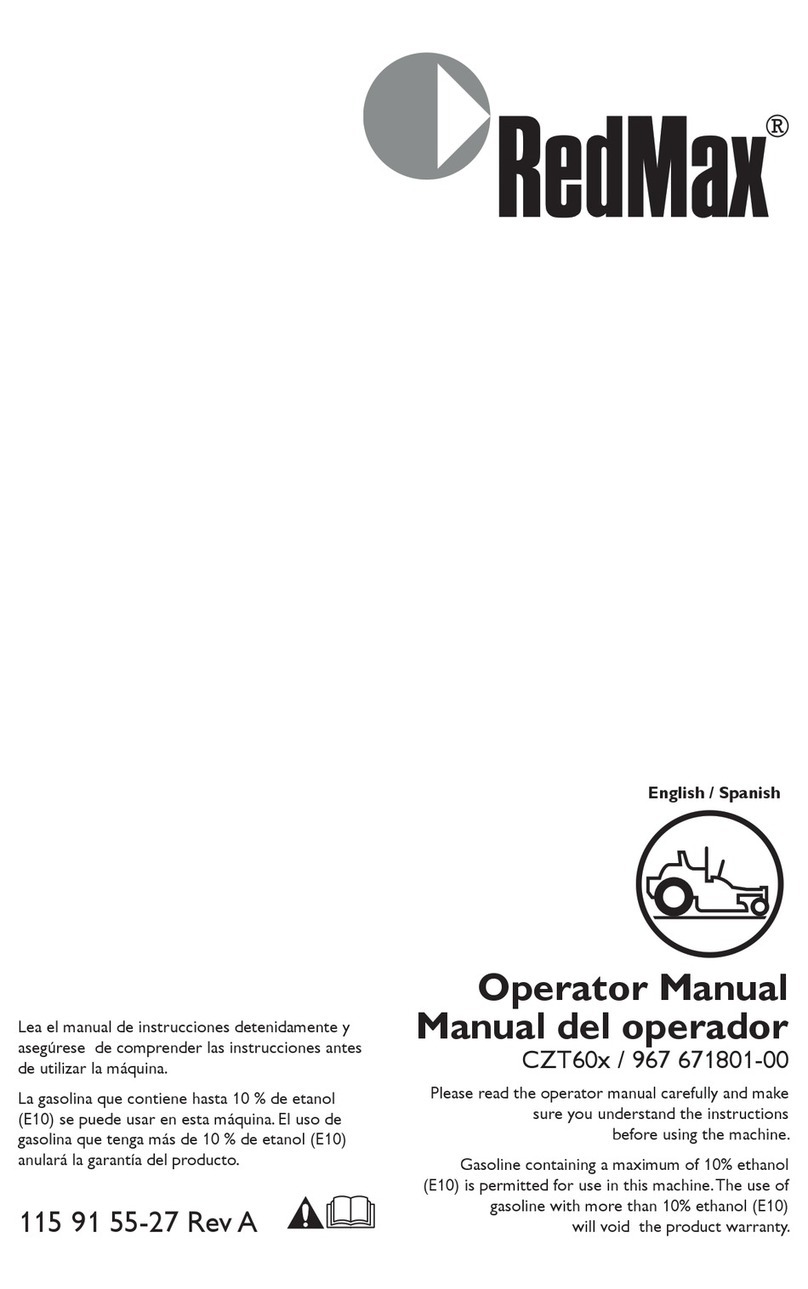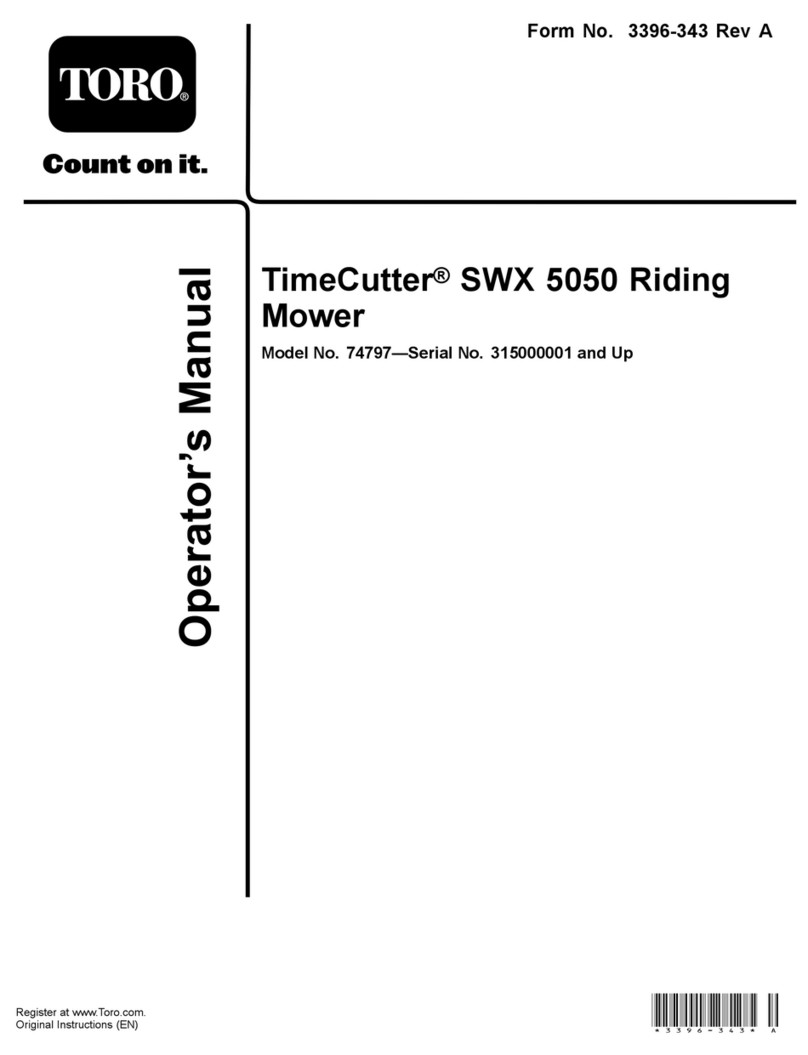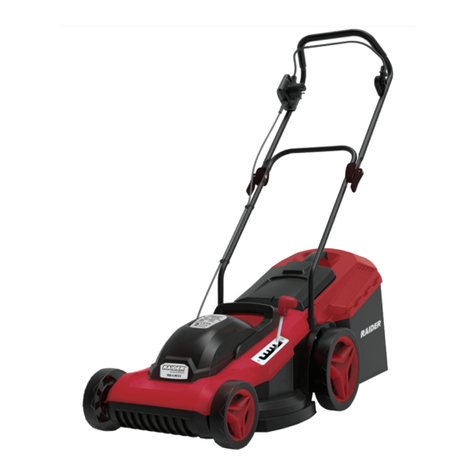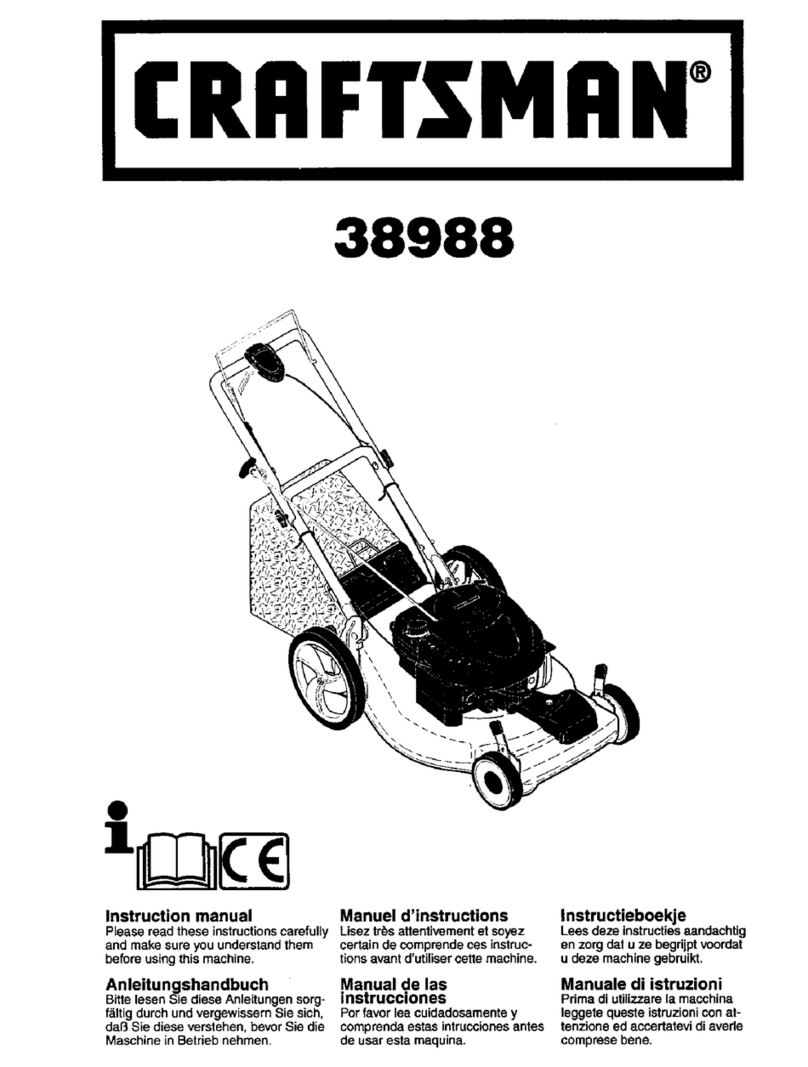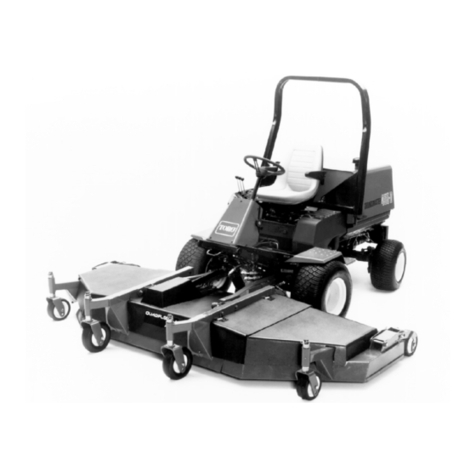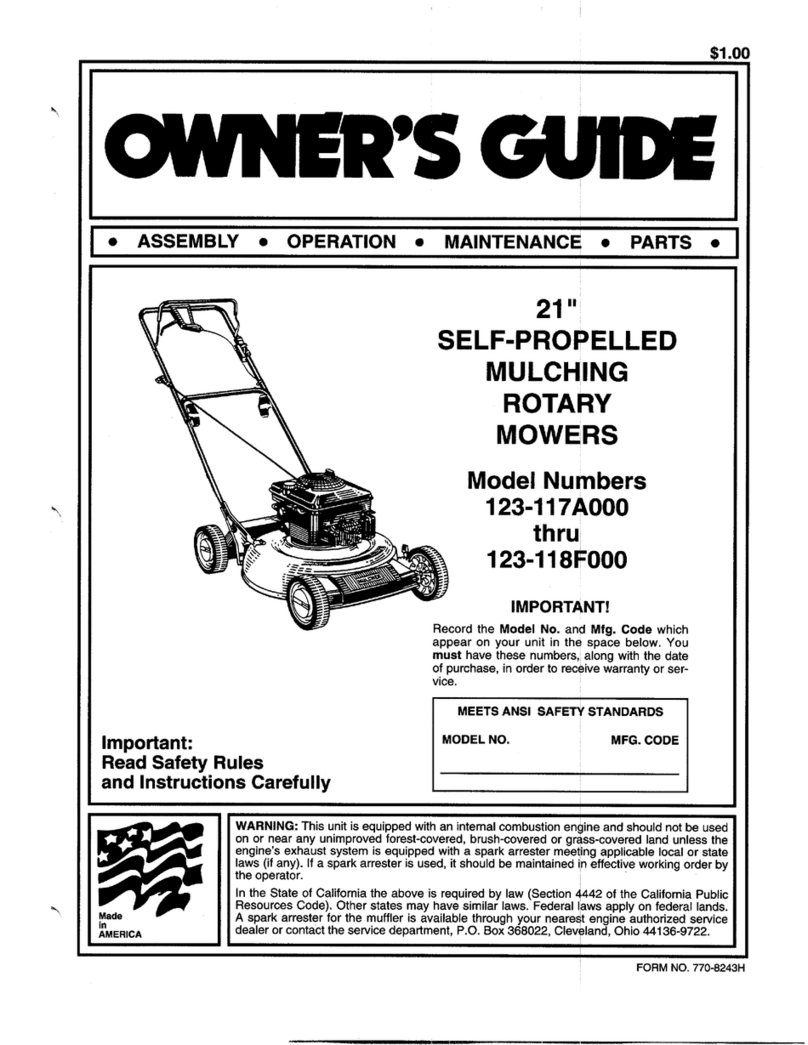Kress Robotik Mission KR111 User manual

Owner's Manual

Owner's Manual P03
Benutzerhandbuch P15
Mode d’emploi P27
Manuale d'uso P39
Manual del propietario P51
Gebruikershandleiding P63
Instrukcja obsługi P75
Návod k použití P87
Návod na použitie P99
Navodila za uporabo P111
Manual de utilizador P123
Felhasználói kézikönyv P135
Priručnik zaupotrebu P147
Kullanıcı el kitabı P159
K R110 K R111
En
De
Fr
I
Es
Nl
Pl
Cz
Sk
Sl
Pt
Hu
Hr
Tr
En
De
Fr
I
Es
Nl
Pl
Cz
Sk
Sl
Pt
Hu
Hr
Tr
Original instructions
Originalbetriebsanleitung
Notice originale
Istruzioni originali
Manual original
Oorspronkelijke gebruiksaanwijzing
Instrukcja oryginalna
Původní návod k používání
Pôvodný návod na použitie
Izvorna navodila
Manual original
Eredeti használati utasítás
Originalne upute za rad
Orijinal işletme talimatı

3
EN
Product safety
General safety warnings
WARNING: Read all safety warnings and
all instructions. Failure to follow the warnings
and instructions may result in electric shock, fire and/
or serious injury.
Carefully read the instructions for the safe
operation of the machine.
Save all warnings and instructions for future
reference.
- This appliance is not intended for use by persons
(including children) with reduced physical, sensory
or mental capabilities, or lack of experience
and knowledge, unless they have been given
supervision or instruction concerning use of the
appliance by a person responsible for their safety.
- Children should be supervised to ensure that they
do not play with the appliance.
- The appliance is only to be used with the power
supply unit provided with the appliance.
IMPORTANT
READ CAREFULLY BEFORE USE
KEEP FOR FUTURE REFERENCE
Safe operation practices
Training
a) Read the instructions carefully. Make sure you
understand the instructions and be familiar with
the controls and the proper use of the appliance.
b)
Never allow people unfamiliar with these
instructions or children to use the appliance. Local
regulations can restrict the age of the operator.
c) The operator or user is responsible for accidents
or hazards occurring to other people or their
property.
Preparation
a) Ensure the correct installation of boundary wire as
instructed.
b) Periodically inspect the area where the appliance
is to be used and remove all stones, sticks, wires,
bones, and other foreign objects.
c) Periodically visually inspect to see that the blades,
blade bolts and cutter assembly are not worn or
damaged. Replace worn or damaged blades and
bolts in sets to preserve balance.
d) On multi-spindle appliances, take care as rotating
one blade can cause other blades to rotate.
e) WARNING! The lawnmower shall not be operated
without the guard in place.
Operation
1. General
a) Never operate the appliance with defective
guards, or without safety devices, for example
deflectors, in place.
b) Do not put hands or feet near or under rotating
parts. Keep clear of the discharge opening at all
times.
c) Never pick up or carry an appliance while the
motor is running.
d) Operate the disabling device from the appliance
- Before clearing a blockage;
- Before checking, cleaning or working on the
appliance.
e) It is not permitted to modify the original design of
robotic lawnmower. All modifications are made at
your own risk.
f) Start robotic lawnmower according to the
instructions. When the power key is switched on,
make sure you keep your hands and feet away
from the rotating blades. Never put your hands
and feet under the mower.
g) Never lift up robotic lawnmower or carry it when
the power key is switched on.
h) Do not let persons who do not know how robotic
lawnmower works and behaves use the mower.
i) Do not put anything on top of robotic lawnmower
or its charging station.
j)
Do not allow robotic lawnmower to be used with a
defective blade disc or body. Neither should it be
used with defective blades, screws, nuts or cables.
k)
Always switch off robotic lawnmower when you do
not intend to use the mower. Robotic lawnmower
can only start when the power key is switched on
and the correct PIN code has been entered.
l) Keep your hands and feet away from the rotating
blades. Never place your hands or feet close to
or under the body when robotic lawnmower is in
operation.
m) To avoid using the machine and its peripherals in
bad weather conditions especially when there is a
risk of lightning.
n) Dot to touch moving hazardous parts before
these have come to a complete stop.
2. Additionally when the appliance is operating
automatically
a) Do not leave the machine to operate unattended
if you know that there are pets, children or people
in the vicinity.
Maintenance and storage
WARNING! When the mower is turned
upside down the power key must always
be switched off.

4
EN
The power key should be switched off during
all work on the mower’s under frame, such as
cleaning or replacing the blades.
a) Keep all nuts, bolts and screws tight to be sure
the appliance is in safe working condition.
b) Inspect the robotic lawnmower each week and
replace worn or damaged parts for safety.
c) Check especially that the blades and blade disc
are not damaged. Replace all blades and screws
at the same time if necessary so that the rotating
parts are balanced.
d) Ensure that only replacement cutting means of
the right type are used.
e) Ensure that batteries are charged using
the correct charger recommended by the
manufacturer. Incorrect use may result in electric
shock, overheating or leakage of corrosive liquid
from the battery.
f) In the event of leakage of electrolyte flush with
water/neutralizing agent, seek medical help if it
comes into contact with the eyes etc.
g) Servicing of the appliance should be according to
manufacturers’ instructions.
Recommendation
To connect the machine and/or its peripherals only to
a supply circuit protected by a residual current device
(RCD) with a tripping current of not more than 30 mA.
Residual risks
To avoid injuries, wear protective gloves when
replacing the blades.
Transport
The original packaging should be used when
transporting robotic lawnmower over long distances.
To safely move form or within the working area:
a) Press the STOP button to stop the mower.
You select the four digit PIN code when you start
the mower for the first time.
b) Always switch off robotic lawnmower if you intend
to carry the mower.
c) Carry the mower by the handle at the rear under
the mower. Carry the mower with the blade disc
away from the body.
Safety Warnings for battery pack inside the tool
a)
Do not dismantle, open or shred battery pack.
b) Do not short-circuit a battery pack. Do not
store battery packs haphazardly in a box or
drawer where they may short-circuit each
other or be short-circuited by conductive
materials. When battery pack is not in use, keep
it away from other metal objects, like paper clips,
coins, keys, nails, screws or other small metal
objects, that can make a connection from one
terminal to another. Shorting the battery terminals
together may cause burns or a fire.
c) Do not expose battery pack to heat or fire.
Avoid storage in direct sunlight.
d) Do not subject battery pack to mechanical
shock.
e) In the event of battery leaking, do not allow
the liquid to come into contact with the skin
or eyes. If contact has been made, wash the
affected area with copious amounts of water
and seek medical advice.
f) Seek medical advice immediately if a cell or
battery pack has been swallowed.
g) Keep battery pack clean and dry.
h) Battery pack gives its best performance
when it is operated at normal room
temperature (20°C ± 5°C).
i) When disposing of battery packs, keep
battery packs of different electrochemical
systems separate from each other.
j) Recharge only with the charger specified by
Kress. Do not use any charger other than
that specifically provided for use with the
equipment. A charger that is suitable for one
type of battery pack may create a risk of fire when
used with another battery pack.
k) Do not use any battery pack which is not
designed for use with the equipment.
l) Keep battery pack out of the reach of
children.
m)Retain the original product literature for
future reference.
n) Dispose of properly.

5
EN
Symbols
WARNING – robotic lawnmower can
be dangerous if incorrectly used. Read
through the Operator’s manual carefully
and understand the content before using
your robotic lawnmower.
WARNING - Keep a safe distance from
the machine when operating.
WARNING – Operate the disabling device
before working on or lifting the machine.
WARNING – Do not ride on the machine.
Class III appliance
Waste electrical products must not be
disposed of with household waste. Please
recycle where facilities exist. Check
with your local authorities or retailer for
recycling advice.
Do not dispose of batteries. Return
exhausted batteries to your local collection
or recycling point.
Do not burn.
Do not expose to rain or water.
Do not wash the machine with a high
pressure washer

6
EN
Component list
10 26 cm
inch
10.2
4
0
0
09:00PM
Wed.11-29-2017
10 26 cm
inch
10.2
4
0
0
2 31
5
13
15
17
20
23 24
19
21
9
8
18
16
12 11 10
22
14
6
7
4

7
EN
1. Charging Strips 13. Handle
2. Cutting Height Adjustment Knob 14. Cutting Blade
3. Rear Driving Wheel 15. Protective Cover
4. Rain Sensor 16. Contact Pins
5. STOP Button 17. Charging Base
6. Display 18. Power Adapter
7. Keypad 19. Wire Pegs
8. ON/OFF key 20. Boundary Wire
9. START key 21. Charging Base Fixing Nails
10. Front Wheel 22. Boundary Wire Distance Gauge
11. Blade Turning Disc 23. Hex Key
12. Battery Pack 24. Connector
Technical data
Type KR110 KR111 (100-199 - designation of machinery, representative of Robotic Lawnmower)
KR110 KR111
Rated voltage 20V Max.*
No load speed 2200/min
Cutting area 1000m21500m2
Cutting diameter 22cm
Cutting height 30-60mm
Cutting height positions 4
Battery type Lithium-ion
Battery model KA0101 KA0102
Charging time approx. 2hrs 1.5hrs
Charger model KA0200 / KA0201 KA0202 / KA0203
Charger rating Input: 100-240V~50/60Hz, 38W,
Output: 20V, 1.5A
Input: 100-240V~50/60Hz, 90W,
Output: 20V, 3.0A
Machinery weight 12.1kg 12.4kg
Protection degree III III
App Y Y
Frequency band of embedded WLAN
module 2.412GHz-2.484GHz
Max. radio-frequency power of
embedded WLAN module
802.11b:+16±2dBm(@11Mbps)
802.11g:+14±2dBm(@54Mbps)
802.11n:+13±2dBm(@HT20,MCS7)
* Voltage measured at no load. Initial battery voltage reaches maximum of 20 volts. Nominal voltage is 18 volts.

8
EN
Noise data
A weighted sound pressure LpA = 40.6 dB (A), KpA= 3.0 dB(A)
A weighted sound power LwA = 59.2 dB (A), KwA= 0.5 dB(A)
Wear ear protection when sound pressure is over 80dB(A)
A degree of noise from the machine is not avoidable. Route noisy work is to be licensed and limits for certain
periods. Keep rest periods and they may need to restrict the working hours to a minimum. For their personal
protection and protection of people working nearby, an appropriate hearing protection shall be worn.
Accessories
KR110 KR111
Screw 9 9
Charging base 1 1
Charging base fixing nails 8 8
Boundary wire 180m 200m
Wire pegs 250 270
Hex key 1 1
Boundary wire distance gauge 2 2
Blade 9 9
Battery pack (KA0101 / KA0102) 1 1
Charger (KA0200 / KA0201 / KA0202 / KA0203) 1 1
Connector 2 2
We recommend that you purchase genuine accessories listed in the above list from the same store that sold
you the tool. Refer to the accessory packaging for further details. Store personnel can assist you and offer
advice.
Intended Use
The garden product is intended for domestic lawn mowing. It is designed to mow often, maintaining a healthier
and better looking lawn than ever before. Depending on the size of your lawn, MissionTM may be programmed
to operate at any time or frequency. It is not intended for digging, sweeping or snow cleaning.
Maintenance
Your MissionTM works hard and needs to be cleaned and checked from time to time. Some parts will require
replacement as they become worn. Never use your MissionTM with defective on/off switch.
Switch off the machine before carrying out any service or maintenance.
Here's how to take care of your MissionTM.

9
EN
1
2
After some time, usually every season, your MissionTM’s blades will need to be replaced. When replacing the
blades, make sure to replace all of them at the same time. You can replace them with one of the spare blade
kits and extra blade screws supplied with your MissionTM.
Before attempting to replace your MissionTM’s
blades, turn the power off and put on protective
gloves and follow these steps:
1. Gently flip the MissionTM over.
2. Remove the battery cover and remove the
battery.
3. Take the screws off the blades with a
screwdriver.
4. Firmly screw on the new blades.
5. Refit the battery and the battery cover.
Important: After screwing the blade to the
blade disc, make sure the blade is able to spin
freely.
A. Replace the blades
The Mission
TM
does not cut grass like other mowers.
Its cutting blades are razor sharp on 2 edges and
rotate in both directions for maximum cutting
capacity. Each blade of your Mission
TM
has 2 cutting
edges. The blade turning disc will make forward and
reverse rotation at random to use both cutting edges
and minimize the frequency of replacing the blades.
Each cutting blade will last up to 2 months when it is
programmed to mow every day. Always check to see
if the blades are chipped or damaged and replace
them if they are. When the cutting blades are dull and
worn out, they should be replaced with the spare
blades provided with your Mission
TM
. Spare blades
are also available at your nearest Kress retailer.
1
WARNING: Before cleaning, adjusting, or replacing the blades, turn your Mission
TM
OFF and
put on protective gloves.
WARNING: When fitting new blades, make sure you replace ALL the blades. Always use new
screws when fitting blades. This is important to ensure blade retention and balance the blade
turning disc. Failure to use new screws could cause serious injury.
Keep it Sharp
WARNING: Before cleaning, turn your Mission
TM
OFF. Put on protective gloves before cleaning
the blade turning disc and do not rinse or flush with water.
Keep it Clean
2

10
EN
Your MissionTM will live a much happier and longer
life if it is cleaned regularly. Since your MissionTM is
an electric machine, you will need to take care when
cleaning. DO NOT use a hose, high pressure
washers or otherwise pour running water on
your MissionTM. It is best to use a spray bottle filled
with water. When cleaning the machine body, use
a soft brush or clean cloth and avoid using solvents
or polishes. Lastly, remove all build up of grass
clippings and debris.
Clean the contact pins located on the charging
base and the charging strips located on the
MissionTM using a cloth. Remove any built up grass
clippings or debris around the contact pins and
charge strips periodically to ensure the MissionTM
successfully charges each time.
Again, it is important that you power the MissionTM
OFF and wear protective gloves before
touching the blade turning disc. First, flip your
MissionTM upside down to expose its underside.
Here you will see the blade disc, the chassis, and
the front wheel and driving wheels. Clean everything
thoroughly with a soft brush or moist rag.
WARNING: NEVER clean the underside of
Mission
TM
with running water. Component
damage can occur.
Rotate the blade disc to ensure it rotates freely.
Check the blades spin freely around the fixing
screws. Remove any obstructions.
IMPORTANT: Remove any lodged debris so
that it does not cause a crack in the blade
disc. Even the tiniest crack can decrease your
MissionTM's mowing output.
A. Cleaning the Body
C. Clean the contact pins and the charging strips
B. Cleaning the underside
The heart of the MissionTM is its 20V Li-Ion Battery. For proper storage of the battery, make sure it is fully
charged and kept in a cool dry place between (-20oC~+60oC).
NOTE: The recommend MissionTM operation temperature is between 0-55oC.
The life-span of the MissionTM’s battery depends on various factors, such as:
• The length of the mowing season in your region
• Amount of hours the MissionTM mows per day
• Battery maintenance during storage
Battery Life
3

11
EN
1. Connect the charging base to a suitable power
supply. The green light on the charging base will
turn on.
2. Manually dock the MissionTM into the charging
base while the MissionTM is powered off.
3. The green light on the charging base will turn to
red. MissionTM will begin to charge.
1. Gently turn your MissionTM upside down.
2. Remove the screws on the battery cover.
Remove the battery cover.
MissionTM can be charged manually without the
boundary wire.
If you need to replace the battery, follow these
steps:
Your Mission
TM
will live longer and healthier if it is allowed to hibernate. So even though it is tough, we
recommend storing your Mission
TM
in your shed or garage during the winter.
Before you prepare your Mission
TM
for winter hibernation, we recommend you:
• Thoroughly clean your Mission
TM
• Fully charge the battery
• Turn the power off
To maximize the battery life, fully charge the battery before storage during winter.
WARNING: Protect the underside of Mission
TM
from water. NEVER store Mission
TM
upside down
outdoors.
The boundary wire can be left in the ground although its ends should be protected, such as placed in a tin can
with grease. If the charging base is left outside for the winter, leave the boundary wire connected.
NOTE: When bringing the Mission
TM
back to work after winter hibernation, make sure the charging strips and
contact pins are clean. We recommend using a fine grade emery cloth to clean the contacts. Using the app,
make sure the date and time are correct and send Mission
TM
back to what it loves doing: mowing.
Winter Hibernation
4
WARNING: Power off before attempting any adjustment, replacement or repair.
Before replacing the blades, turn your MissionTM OFF and put on protective gloves.
Replacing the battery
5

12
EN
3.
Lift out the old battery carefully. Press the latch
and release the connectors.
NOTE: Do not pull by the cables. Hold the
connectors and release the latch.
4. Connect a new original battery by attaching
the connectors until they click into position.
5. Fit the battery as shown. Place the cover
back in its position and tighten the screws.
21
2

13
EN
Troubleshooting
If your MissionTM does not work correctly, follow the trouble shooting guide below. If the fault persists, contact
your dealer.
Symptom Cause Solution
The LED light on the charging
base does not turn on. There is no power.
Check the charging base is connected
properly to the charger and the charger
is connected to a suitable power supply.
Green light flashing on the
charging base.
The boundary wire isn’t
connected.
Check that the boundary wire has been
connected correctly to the charging base.
Check there are no breaks in the
boundary wire, especially in the wire ends.
Your MissionTM is inside its
working area but the display
says “outside working area”
and the LED is green.
The boundary wire ends are
clamped incorrectly. Reverse the boundary wire ends.
MissionTM cannot correctly
dock with the Charging base.
Environmental influences. Restart MissionTM.
Poor connection caused by
debris on the charging strip.
Clean the contact pins located on the
charging base and the charging strip on
MissionTM using a cloth.
MissionTM runs outside the
boundary wire. MissionTM does
not mow an area within a
boundary wire zone. MissionTM
reverses or rotates erratically
near the boundary wire.
The boundary wire of another
MissionTM or another branded
robotic mower is positioned too
closely.
Ensure your MissionTM boundary wire
has at least 1m of spacing between the
neighboring boundary wire.
The boundary wire has been
installed with acute angles.
Check the boundary wire to ensure the
angles are smooth.
In wet conditions, the boundary
wire electric signal may leak
where wire has been joined or
repaired.
Check boundary wire joints. Insulate to
provide a fully waterproof connection.
There is boundary wire electric
signal leakage due to broken
insulation.
Repair damaged boundary wire
insulation with insulation tape.
The cutting area is larger than
the allowable cutting area for
MissionTM.
Decrease the cutting area.
MissionTM exits the boundary
wire due to high speed when
going down a hill.
The boundary wire is placed on
a slope steeper than 17% (10°).
Reposition the boundary wire away from
slopes that are steeper than 17% (10°).
Environmental protection
Waste electrical products should not be disposed of with household waste. Please recycle where facilities
exist. Check with your Local Authority or retailer for recycling advice.

14
EN
Declaration of conformity
We,
Positec Germany GmbH
Grüner Weg 10, 50825 Cologne, Germany
Declare that the product,
Description Robotic Lawnmower
Type KR110 KR111 (100-199- designation of machinery, representative of Robotic Lawnmower)
(Year, article number and month of serial number are placed on the back page. The complete serial
number is clearly stated on the enclosure of lawnmower) with battery charger KA0200 / KA0201 /
KA0202 / KA0203 and charging base KA0070
Function Cutting grass
Complies with the following Directives,
2006/42/EC, 2014/30/EU, 2014/35/EU, 2011/65/EU, 2000/14/EC amended by 2005/88/EC, 2014/53/EU
2000/14/EC amended by 2005/88/EC
- Conformity Assessment Procedure as per Annex V
- Measured Sound Power Level 59.2 dB (A)
- Declared Guaranteed Sound Power Level 60 dB (A)
Standards conform to,
EN 60335-1:2012+A11:2014, EN 50636-2-107:2015, EN 60335-2-29:2004+A2:2010,
EN 62233:2008, EN ISO 3744:2005, EN 55014-1:2006+A1:2009+A2:2011,
EN 61000-3-2:2014, EN 61000-3-3:2013, EN 55014-2:2015,
EN 61558-1:2005+A1:2009, EN 61558-2-16:2009+A1:2013,
EN 300 328 V2.1.1, EN 301 489-1 V2.1.1, EN 301 489-17 V3.1.1, EN 62311:2008
The person authorized to compile the technical file,
Name Marcel Filz
Address Positec Germany GmbH, Grüner Weg 10, 50825 Cologne, Germany
2018/02/24
Allen Ding
Deputy Chief Engineer, Testing & Certification
Positec Technology (China) Co., Ltd.
18, Dongwang Road, Suzhou Industrial
Park, Jiangsu 215123, P. R. China

15
De
Produktsicherheit
Allgemeine Sicherheitshinweise für
Elektrowerkzeuge
WARNUNG: Lesen Sie alle
Sicherheitshinweise und Anweisungen.
Versäumnisse bei der Einhaltung der
Sicherheitshinweise und Anweisungen können
elektrischen Schlag, Brand und/oder schwere
Verletzungen verursachen.
Lesen Sie die Bedienungsanleitung zum sicheren
Betrieb des Gerätes aufmerksam durch.
Bewahren Sie alle Sicherheitshinweise und
Anweisungen für die Zukunft auf.
- Dieses Gerät ist nicht zur Verwendung durch
Personen (einschließlich Kindern) vorgesehen,
die über reduzierte körperliche Eignung,
Wahrnehmung oder geistige Fähigkeiten, Mangel
an Erfahrung und Wissen verfügen, sofern
diese Personen nicht von einer verantwortlichen
Person beaufsichtigt oder in der Verwendung des
Gerätes unterwiesen wurden.
- Kinder sollten grundsätzlich beaufsichtigt werden,
damit sie nicht mit dem Gerät spielen.
- Das Gerät darf nur mit dem mitgelieferten Netzteil
verwendet werden.
WICHTIG
VOR GEBRAUCH BITTE SORGFÄLTIG
DURCHLESEN UND FÜR WEITERE FRAGEN
AUFBEWAHREN
Sicherer Betrieb
Training
a) Die Anweisungen aufmerksam durchlesen.
Machen Sie sich mit den Bedienelementen
und dem vorschriftsmäßigen Gebrauch des
Rasenmähers vertraut.
b) Niemals Kindern oder mit diesen Anweisungen
nicht vertrauten Personen erlauben, den
Rasenmäher zu benutzen. Nationale
Vorschriften können das Alter der Bedienperson
möglicherweise beschränken.
c)
Bedenken Sie, dass der Bediener oder Benutzer
bei Unfällen oder Gefährdungen anderer Personen
oder deren Eigentum die Verantwortung trägt!
Vorbereitung
a) Stellen Sie sicher, dass das Begrenzungskabel
gemäß den Anweisungen verlegt wird.
b) Inspizieren Sie die Gegend, in der die Ausrüstung
eingesetzt werden soll, gründlich und entfernen
Sie alle Objekte, die durch die Maschine
aufgeschleudert werden könnten.
c) Überprüfen Sie in regelmäßigen Abständen, ob
Messer, Messerschrauben und Schneidbalken
abgenutzt oder beschädigt sind. Abgenutzte
Messer und Schrauben nur im ganzen Satz
auswechseln, um Unwuchten zu vermeiden.
d) Achten Sie darauf, dass bei Geräten mit mehreren
Klingen ein Klingensatz durch den anderen in
Rotation versetzt werden kann.
e) WARNUNG! Der Rasenmäher darf nicht betrieben
werden, wenn der Schutz nicht angebracht ist.
Betrieb
1. Allgemeine Sicherheitshinweise
a) Betreiben Sie das Gerät niemals mit
defektem Schutz oder ohne installierte
Sicherheitsvorrichtungen, wie etwa Deflektoren;
b) Hände und Füße nicht in die Nähe oder unter
rotierende Teile bringen. Halten Sie sich stets von
der Austrittsöffnung fern.
c) Niemals den Rasenmäher bei laufendem Motor
anheben oder tragen.
d) Betätigen Sie die Deaktivierungseinrichtung des
Geräts,
– vor dem Beseitigen einer Verstopfung;
– vor dem Überprüfen, Reinigen oder Arbeiten am
Gerät.
e) Der ursprüngliche Zustand des Kress MissionTM
darf nicht modifiziert werden. Alle Änderungen
erfolgen auf eigene Verantwortung.
f) Starten Sie den Roboter-Rasenmäher
gemäß Anweisungen. Wenn der Netzschalter
eingeschaltet ist, stellen Sie sicher, dass Sie Ihre
Hände und Füße von den drehenden Messern
entfernt halten. Bringen Sie Ihre Hände und Füße
niemals unter den Rasenmäher.
g) Heben Sie den Roboter-Rasenmäher niemals an
bzw. tragen Sie ihn nicht, wenn der Netzschalter
eingeschaltet ist.
h)
Erlauben Sie niemandem, der sich mit den
Funktionen und Verhaltensmustern des Kress
MissionTM nicht auskennt, den Mäher zu benutzen.
i) Keine Gegenstände auf den Kress MissionTM oder
seine Ladestation legen.
j) Wenn der Messerteller oder das Gehäuse defekt
ist, darf der Kress MissionTM nicht in Betrieb
genommen werden. Das gleiche gilt für defekte
Messer, Schrauben, Muttern oder Kabel.
k) Schalten Sie den Roboter-Rasenmäher stets
aus, wenn dieser nicht verwendet wird. Der
Roboter-Rasenmäher kann nur starten, wenn der
Netzschalter eingeschaltet ist und der korrekte
PIN-Code eingegeben wurde.
l)
Halten Sie Hände und Füße von den rotierenden
Rasenmäherklingen fern. Halten Sie mit Ihren Händen
und Füßen stets einen sicheren Abstand zum
Gehäuse ein, solange der Rasenmäher in Betrieb ist.
m) Vermeiden Sie die Nutzung der Maschine und
deren Peripheriegeräten bei schlechtem Wetter,
besonders wenn die Gefahr eines Blitzschlags.

16
De
n) Berühren Sie sich bewegende gefährliche Teile
nicht, bevor diese vollständig zum Stillstand
gekommen sind.
2. Hinweis zum Automatikbetrieb des Roboters
a) Den Kress MissionTM niemals unbeaufsichtigt
verwenden, wenn sich Personen – besonders
Kinder – oder Haustiere in der Nähe aufhalten.
Wartung und Lagerung
WARNUNG! Wenn der Rasenmäher
umgedreht wird, muss der Netzschalter
stets ausgeschaltet werden.
Der Netzschalter muss bei allen Arbeiten am
Unterbau des Rasenmähers ausgeschaltet
werden, beispielsweise bei der Reinigung oder
beim Wechseln der Messer.
a) Stellen Sie den festen Sitz aller Schrauben,
Muttern und Bolzen sicher, um zu gewährleisten,
dass sich der Rasenmäher in einem
betriebssicheren Zustand befindet.
b) Den Kress MissionTM einmal pro Woche
kontrollieren und eventuell beschädigte oder
verschlissene Teile austauschen.
c) Messer und Messerteller besonders sorgfältig auf
Schäden untersuchen. Bei Bedarf alle Messer
und Schrauben gleichzeitig austauschen, um eine
Unwucht der rotierenden Teile zu vermeiden.
d) Verwenden Sie beim Austausch nur Original Kress
Messer.
e) Verwenden Sie zum Laden des Akkus nur das
vom Hersteller empfohlene Ladegerät. Eine nicht
den Hinweisen entsprechende Verwendung kann
zu einem Stromschlag, zur Überhitzung oder zum
Auslaufen der Batterieflüssigkeit führen.
f) Tritt Batterieflüssigkeit aus, beseitigen Sie sie mit
Wasser und einem neutralen Reinigungsmittel.
Kommt sie mit Augen etc. in Kontakt, suchen Sie
sofort einen Arzt auf.
g) Warten Sie den Roboter nach den Anweisungen
des Herstellers.
Empfehlung
Schließen Sie die Maschine und/oder deren
Peripheriegeräte nur an einen Speisestromkreis an, der
über einen Fehlerstromschutzschalter (RCD) mit einem
Auslösestrom von nicht mehr als 30 mA verfügt.
Restrisiken
Um Verletzungen zu vermeiden, tragen Sie beim
Wechseln der Klingen Schutzhandschuhe.
Transport
Für längere Transporte legen Sie den Kress MissionTM
am besten in die Originalverpackung.
Für einen sicheren Transport vom oder innerhalb des
Arbeitsbereichs:
a) Drücken Sie die STOP -Taste, um den Mäher zu
stoppen.
b) Sie wählen den vierstelligen PIN aus, wenn Sie
den Mäher das erste Mal benutzen.
c) Schalten Sie den Roboter-Rasenmäher immer
aus, wenn Sie diesen tragen möchten.
d) Den Mäher an seinem Griff ganz hinten unten
tragen. Halten Sie den Messerteller beim Tragen
des Mähers vom Körper weg.
Sicherheitshinweise bezüglich des Akkus im
Werkzeug
a) Zellen bzw. Akku nicht zerlegen, öffnen oder
zerdrücken.
b) Akku nicht kurzschließen. Akkus nicht
wahllos in einer Schachtel oder Schublade
aufbewahren, wo sie einander kurzschließen
oder durch andere leitfähige Materialien
kurzgeschlossen werden könnten. Bei
Nichtverwenden des Akkus ist dieses von
Metallgegenständen, wie etwa Büroklammern,
Münzen, Nägeln, Schrauben oder anderen
kleinen Metallgegenständen fernzuhalten, wo
sich die Batterieklemmen berühren können.
Das Kurzschließen der Batterieklemmen kann
Verbrennungen bzw. einen Brand verursachen.
c) Zellen bzw. Akkus nicht Hitze oder
Feuer aussetzen. Lagerung in direktem
Sonnenlicht vermeiden.
d) Akku nicht mechanischen Stößen aussetzen.
e) Im Fall, dass Flüssigkeit aus dem Akku
austritt, darf diese nicht in Kontakt mit
der Haut oder den Augen kommen. Sollte
dies dennoch geschehen, den betroffenen
Bereich sofort mit viel Wasser spülen und
einen Arzt aufsuchen.
f)
Beim Verschlucken einer Zelle oder eines Akkus
muss sofort ein Arzt herangezogen werden.
g) Akku sauber und trocken halten.
h) Akkus funktionieren bei normaler
Zimmertemperatur (20°C ± 5°C) am besten.
i) Beim Entsorgen von Akkus sollten Akkus mit
verschiedenen elektrochemischen Systemen
voneinander getrennt gehalten werden.
j)
Nur mit dem von Kress bezeichneten
Ladegerät aufladen. Kein Ladegerät
verwenden das nicht ausdrücklich für den
Gebrauch mit dem Gerät vorgesehen ist.
Ein
Ladegerät, das für eine bestimmte Art von Akku
geeignet ist, kann bei Verwendung mit einem
anderen Akku eine Brandgefahr darstellen.
k) Keinen Akku verwenden der nicht für den
Gebrauch mit dem Gerät vorgesehen ist.
l) Akkus von Kindern fernhalten.
m)Die originalen Produktunterlagen zum
späteren Nachschlagen aufbewahren.
n) Ordnungsgemäß entsorgen.

17
De
Symbole
WARNUNG–Rasenmähroboter können bei
unsachgemäßer Verwendung gefährlich
sein. Lesen Sie die Bedienungsanleitung
sorgfältig durch und verstehen Sie deren
Inhalt, bevor Sie Ihren Rasenmähroboter
betreiben.
WARNUNG- Halten Sie einen
Sicherheitsabstand wenn der Roboter-
Rasenmäher in Betrieb ist.
WARNUNG – Betätigen Sie die
Deaktivierungsvorrichtung, bevor Sie
am Gerät arbeiten oder die Maschine
anheben.
WARNUNG – RASENMÄHROBOTER
darf nicht als Transportmittel missbraucht
werden.
Gerät der Klasse III
Elektroprodukte dürfen nicht mit dem
normalen Haushaltsmüll entsorgt werden,
sondern sollten nach Möglichkeit zu
einer Recyclingstelle gebracht werden.
Ihre zuständigen Behörden oder Ihr
Fachhändler geben Ihnen hierzu gerne
Auskunft.
Akku nicht in den Haushaltsmüll geben.
Bringen Sie den leeren Akku zu Ihrer
lokalen Sammel- oder Recyclingstelle.
Nicht im Feuer entsorgen
Vor Regen und Feuchtigkeit schützen
Waschen Sie das Gerät nicht mit einem
Hochdruckreiniger.

18
De
Komponenten
10 26 cm
inch
10.2
4
0
0
09:00PM
Wed.11-29-2017
10 26 cm
inch
10.2
4
0
0
2 31
5
13
15
17
20
23 24
19
21
9
8
18
16
12 11 10
22
14
6
7
4

19
De
1. Ladestreifen 13. Griff
2. Drehknopf Zum Einstellen Der Schnitthöhe 14. Messer
3. Hinteres Antriebsrad 15. Schutzhaube
4. Regensensor 16. Kontaktstifte
5. Stopptaste 17. Ladestation
6. Anzeige 18. Netzteil
7. Tastenfeld 19. Heringe
8. Ein/Aus-Taste 20. Begrenzungskabel
9. Start-Taste 21. Ladestation-Befestigungsschrauben
10. Vorderrad 22. Begrenzungskabel-Abstandlehre
11. Messerteller 23. Inbusschlüssel
12. Akku 24. Verbindungsstück
Technische daten
Typ KR110 KR111 (100-199 - Bezeichnung der Maschine, repräsentiert den Rasenmähroboter)
KR110 KR111
Nennleistung 20V Max.*
Leerlaufdrehzahl 2200/min
Schneidebereich 1000m21500m2
Schnittbreite 22cm
Schnitthöhe 30-60mm
Schnitthöhenverstellung 4
Batterietyp Lithium-ion
Akkumodell KA0101 KA0102
Ladezeit Ca. 2hrs 1.5hrs
Ladegerätmodell KA0200 / KA0201 KA0202 / KA0203
Leistung des Ladegeräts
Eingang:100-240V~50/60Hz, 38W,
Ausgang: 20V, 1.5A
Eingang:100-240V~50/60Hz, 90W,
Ausgang: 20V, 3.0A
Gewicht 12.1kg 12.4kg
Schutzklasse III III
App Y Y
Frequenzband des integrierten WLAN-
Moduls (GHz) 2.412GHz-2.484GHz
Max. Hochfrequenzleistung des
integrierten WLAN-Moduls
802.11b:+16±2dBm(@11Mbps)
802.11g:+14±2dBm(@54Mbps)
802.11n:+13±2dBm(@HT20,MCS7)
* Spannung ohne Arbeitslast gemessen. Die anfängliche Akkuspannung erreicht maximal 20 Volt. Die
Nennspannung liegt bei 18 Volt.

20
De
Informationen über lärm
Gewichteter Schalldruck LpA = 40.6 dB (A), KpA= 3.0 dB(A)
Gewichtete Schallleistung LwA = 59.2 dB (A), KwA= 0.5 dB(A)
Tragen Sie einen Schallschutz bei einem Schalldruck über 80dB(A)
Eine gewisse Geräuschentwicklung der Maschine ist unvermeidlich. Die Durchführung geräuschintensiver
Arbeiten benötigt eine Zulassung und muss in bestimmten Zeiten eingeschränkt werden. Halten Sie
Ruhephasen ein und beschränken Sie die Arbeitsstunden auf ein Minimum. Zu Ihrem eigenen Schutz und den
von Personen, die sich in der Nähe befinden, muss ein geeigneter Gehörschutz getragen werden.
Zubehörteile
KR110 KR111
Schrauben 9 9
Ladestation 1 1
Fixierungsnägel für Ladestation 8 8
Begrenzungskabel 180m 200m
Heringe 250 270
Inbusschlüssel 1 1
Begrenzungskabel Abstandslehre 2 2
Messer 9 9
Akkupack (KA0101 / KA0102) 1 1
Lader (KA0200 / KA0201 / KA0202 / KA0203) 1 1
Verbindungsstück 2 2
Wir empfehlen Ihnen, sämtliche Zubehörteile beim selben Fachhändler zu beziehen, bei dem Sie auch Ihr
Elektrowerkzeug oder Gartengerät gekauft haben. Weitere Informationen finden Sie auf der Verpackung der
Zubehörteile. Auch Ihr Fachhändler berät Sie gerne.
Bestimmungsgemäßer Gebrauch
Dieses Produkt ist bestimmt für das Rasenmähen im privaten Bereich. Er ist zum häufigen Mähen bestimmt –
er hält Ihren Rasen gesund und dieser wird gepflegter aussehen als je zuvor. Je nach Größe des Rasens kann
der MissionTM so programmiert werden, dass er zu jeder beliebigen Zeit und mit jeder beliebigen Frequenz
uneingeschränkt arbeitet. Es ist nicht zum Graben, Reinigen oder Schneeräumen konzipiert.
Wartung
Ihr MissionTM muss hin und wieder überprüft werden. Der MissionTM arbeitet hart und verdient daher von Zeit
zu Zeit eine ordentliche Reinigung oder einen Austausch von Verschleißteilen. Verwenden Sie niemals Ihren
MissionTM, wenn der Ein/Aus Schalter defekt ist.
Schalten Sie die Maschine aus, ehe Sie jegliche Reparatur- oder Wartungsarbeiten ausführen.
In Folgenden möchten wir Ihnen erklären, wie Sie Ihren neuen MissionTM am besten an sein neues Umfeld
gewöhnen und ihm die Pflege zukommen lassen, die er verdient.
This manual suits for next models
3
Table of contents
Languages:
Other Kress Robotik Lawn Mower manuals
